NGC 281
Sky-Watcher Esprit 120 First Light
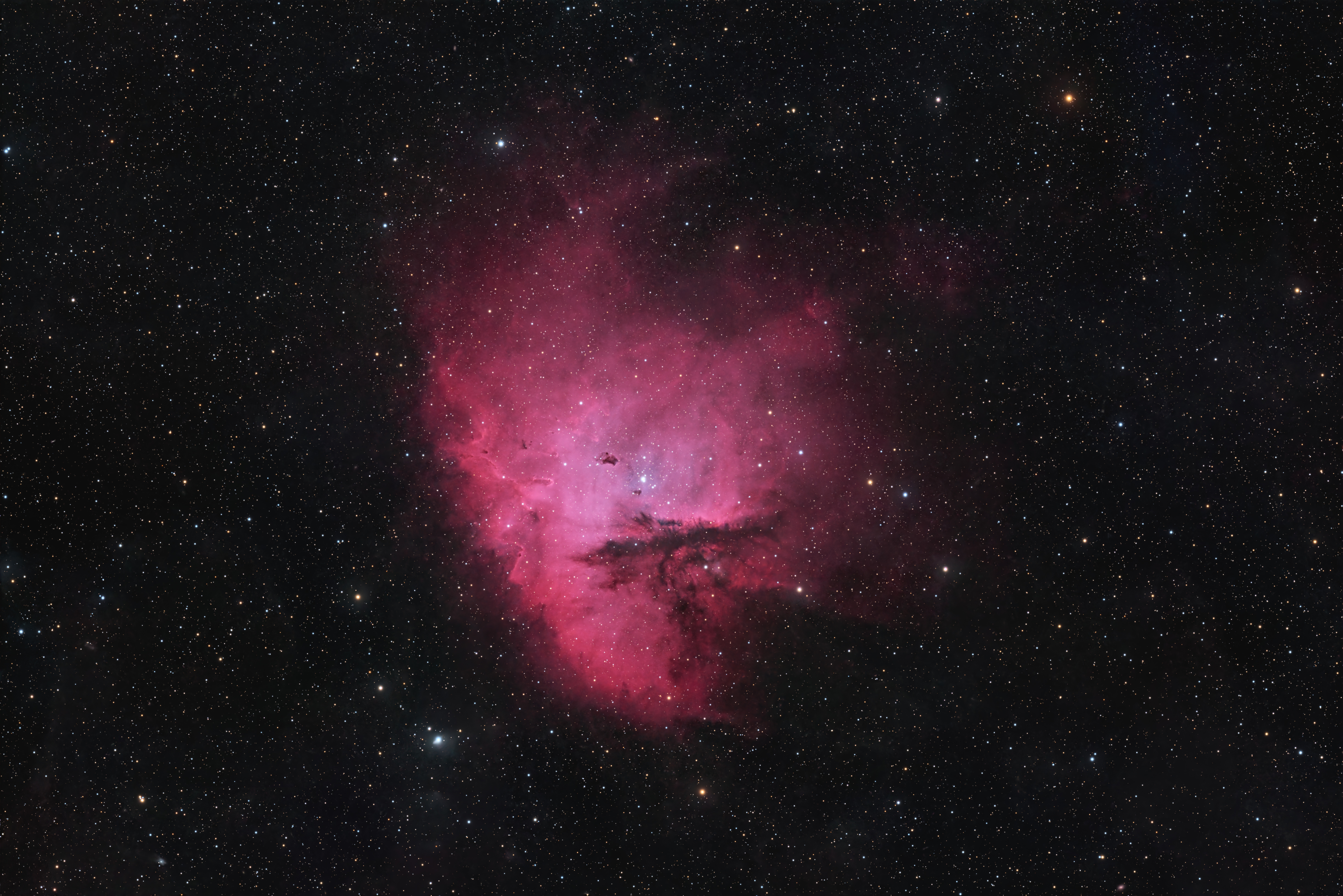 Click here for full size image
Click here for full size image
July 25, 2025
NGC 281 is known as the Pacman Nebula. This nickname comes from its appearance, resembling an early video game character. The designation NGC 281 refers to the nebula; the star cluster in the centre is IC 1590. These cluster stars were born out of this hydrogen gas, and now cause it to glow. The black, dense globules are called Bok globules, from which the bright stars are born. The Pacman is about 9,500 light years away, and covers a little more sky than the full Moon. I have imaged this object previously (most recently in 2018), but I like the current version best of all. For you Ha lovers, an Ha only version from 2015 is also available.
This is the First Light Image for a new telescope: the Sky-Watcher Esprit 120. This scope has an image circle that can cover a full-frame 35mm sensor with pinpoint stars. The field of view is a little more tha 1 x 1.5 degrees with my QHY168C camera. This rig is pimped out with Primalucelab gear: EAGLE 6 Pro, GIOTTO flat panel and ALTO cover motor, ESATTO focuser, ARCO rotator, ECCO dew heater controller. I used an Optolong L-Quad Enhance Filter to suppress light pollution. The telescope is riding on a Sky-Watcher Wave 150i mount, and I am using a Sky-Watcher EvoGuide 50 ED guide scope with a QHY5 II L guide camera. As you can see from the image above, everything is working great. Set and forget.
Tekkies:
Acquisition, focusing, and control of Sky-Watcher Wave 150i mount and other equipment with N.I.N.A. and Green Swamp Server. Primalucelab 3″ ESATTO focuser, ARCO rotator, GIOTTO flat panel and ALTO cover motor. Equipment control with Primalucelab EAGLE 6 Pro computer. All pre-processing and processing in PixInsight. Acquired from my SkyShed in Guelph. Acquired under above average transparency and seeing and no Moon on the nights of July 21-24, 2025.
First Light with Sky-Watcher Esprit 120 refractor. QHY168C camera with Optolong L-Quad Enhance filter.
109 x 5m = 9hr 05m
Preprocessing: The WeightedBatchPreProcessing script was used to perform calibration, cosmetic correction, debayering, weighting, registration, integration and Drizzle integration of all frames (2x drizzle, 1.0 Drop Shrink).
Gradient Removal: SpectrophotometricFluxCalibration was applied followed by MultiscaleGradientCorrect t was applied with default settings.
Colour Calibration: BlurXterminator was applied to the RGB master with Correct Only selected, followed by SpectrophotometricColorCalibration.
Deconvolution: BlurXterminator was applied to the RGB master with Automatic psf , star sharpening set to 0.5, and non-stellar set to 0.9.
Linear Noise Reduction: NoiseXterminator was applied with settings Amount=0.9 and Iterations=4.
Stretching: HistogramTransformation was applied to make a pleasing image with background approximately 0.08.
Nonlinear Processing
Star Removal: StarXterminator was used to remove the stars from the master, with default settings, except Large Overlap was selected. The stars-only image was retained.
Nonlinear Noise Reduction: NoiseXterminator was applied with Amount=0.9 and Iterations = 4
Re-stretch: HistogramTransformation was used to boost contrast by moving the dark point to the toe of the histogram and slightly decreasing the mid-point slider.
Contrast Enhancement: LocalHistogramEqualization was applied twice. A Contrast Limit of 1.5 and 1 iteration was used for each LHE application (scale 40, strength 0.25; scale 150, strength 0.35).
Sharpening: MultiscaleMedianTransform was applied. (Layers 2 – 4 with strengths of 0.03 0.04, and 0.02 respectively).
Contrast, Brightness and Colour: Brightness, contrast, hue, and saturation were adjusted in several iterations using CurvesTransformation and the Jurgen Terpe Selective Color Correction script, with masks as required.
Stars-only steps: The CIE L* channel (i.e. the lightness channel) was extracted from the stars-only image and then applied to the star image as a mask. CurvesTransformation’s Saturation slider was used to boost colour in the stars.
Star Restoration: The PixelMath expression combine(starless, stars, op_screen()) was used to combine the starless starless image with the stars-only image. The StarReduction script was applied with small star protection enabled (Tranfer method, strength 0.4) to slightly reduce the larger stars.
Final Steps: Background, nebula, and star brightness, contrast, and saturation were adjusted in several iterations using CurvesTransformation with masks as required. ICCProfileTransformation (sRGB IEC61966-2.1; Relative Colorimetric with black point compensation) was applied prior to saving as a jpg. The finder chart was made using the FindingChart process.

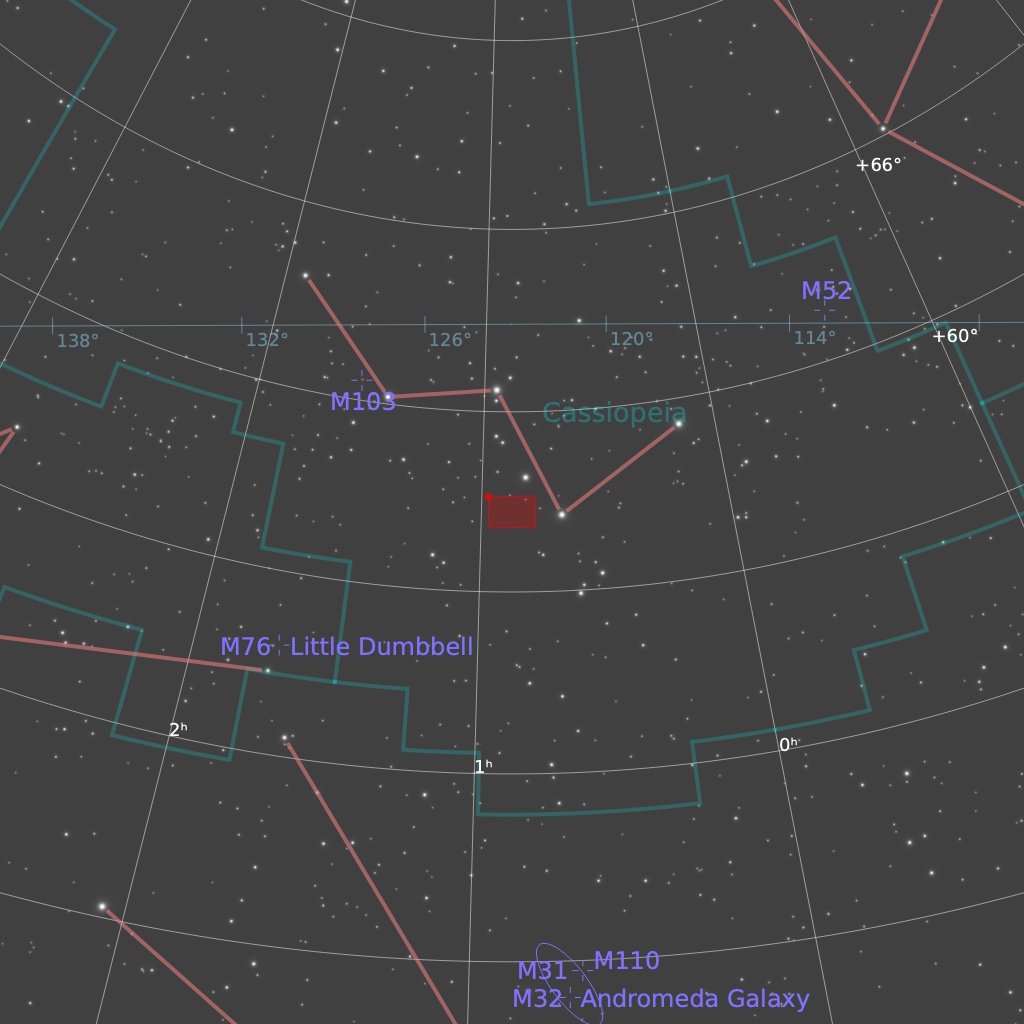
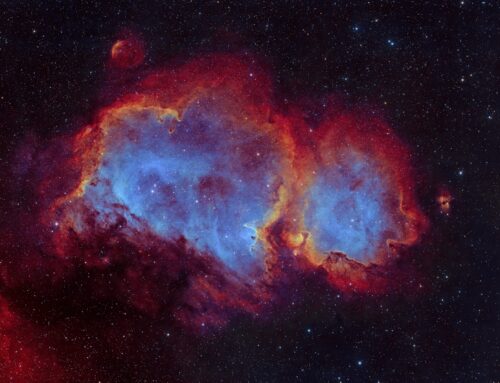

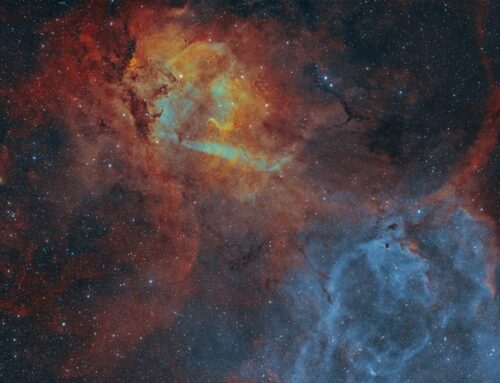
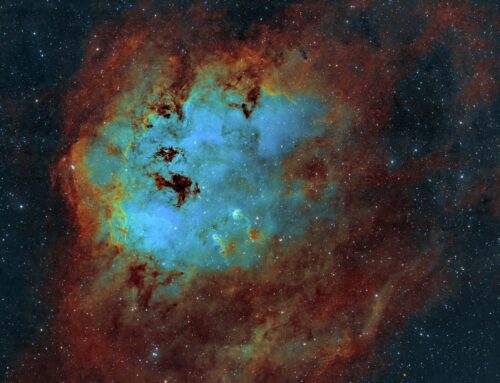
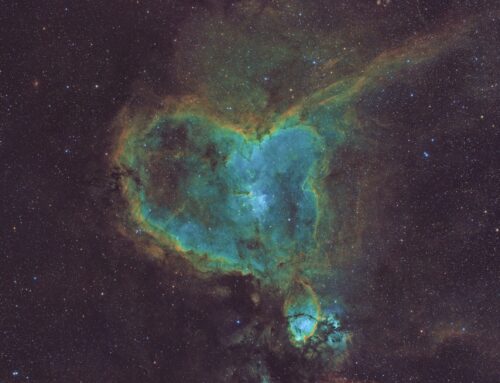
Looks great. Love my Esprit 120!